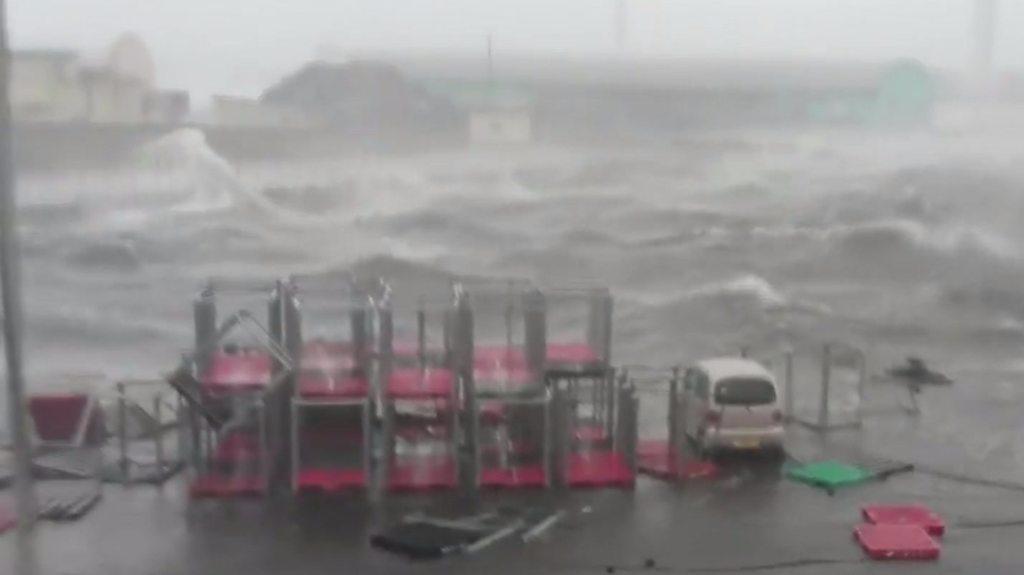Typhoon Jebi forces closure of Kansai airport, near Osaka in Japan
- Published
Thousands of people had to be evacuated from Kansai airport
A major international airport in western Japan has been closed, with thousands of people evacuated, in the wake of deadly Typhoon Jebi.
Kansai airport, a major transport hub serving Osaka, Kobe and Kyoto, was cut off when an ocean tanker hit and damaged its bridge to the mainland.
Jebi, Japan's most powerful storm in 25 years, has killed at least 10 people.
In a separate incident, a 6.6 magnitude earthquake caused a landslide on Japan's northern island of Hokkaido.
A number of houses in the town of Atsumi were engulfed and several people were said to be trapped. There were no reports of fatalities.
The quake came as Typhoon Jebi left a trail of damage to infrastructure, ripping off roofs, overturning vehicles and cutting power.
Have you been affected by Typhoon Jebi? If safe to do so, email haveyoursay@bbc.co.uk, external or contact yourpics@bbc.co.uk, external
What happened at the airport?
The tanker was unmoored by the strong winds of Typhoon Jebi and drifted into the bridge.
Kansai International Airport is built on a man-made island and is linked to the mainland by the bridge.
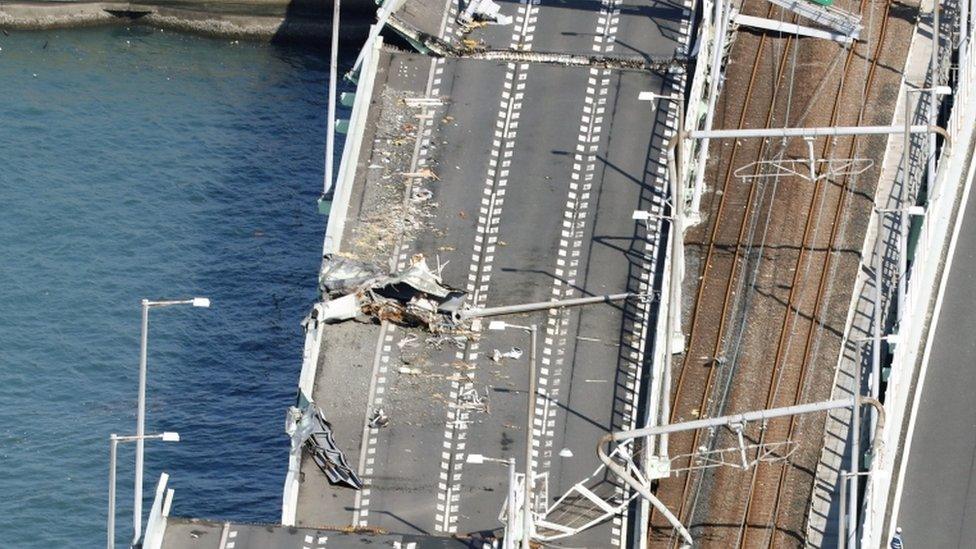
The airport's bridge to the mainland was damaged when a tanker hit it
About 3,000 passengers were stranded overnight, some for more than 18 hours in terminals without power, before ferries and speedboats were deployed to evacuate them on Wednesday.
One passenger told broadcaster NHK: "We had a blackout so there was no air conditioning. It was hot."
Some people were able to leave on buses, using an unaffected part of the damaged bridge.
Earlier footage of the destruction of Typhoon Jebi
Runways were also severely hit by surging water, with some aircraft flooded up to their engines.
All flights have been cancelled and there is no confirmation of when the airport will reopen. The Kansai airport website, external could only say that the runways and bridge would reopen on "6 September or later". Some reports said it could take a week.
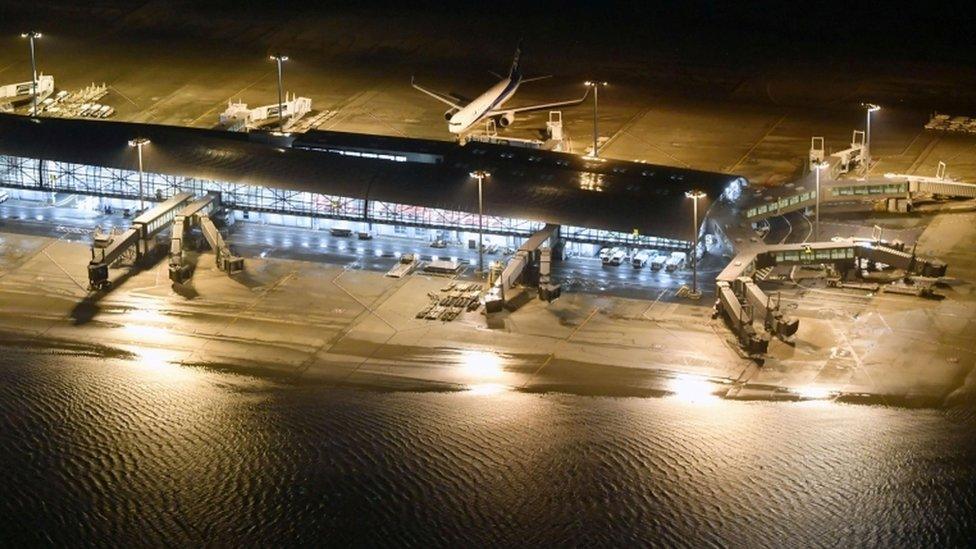
Runways were also flooded at Kansai airport
In 2016, Kansai handled some 25 million passengers, making it the third busiest in Japan.
How strong was the storm?
It recorded winds of up to 216km/h (135mph) and made landfall at about noon local time on Tuesday (03:00 GMT).
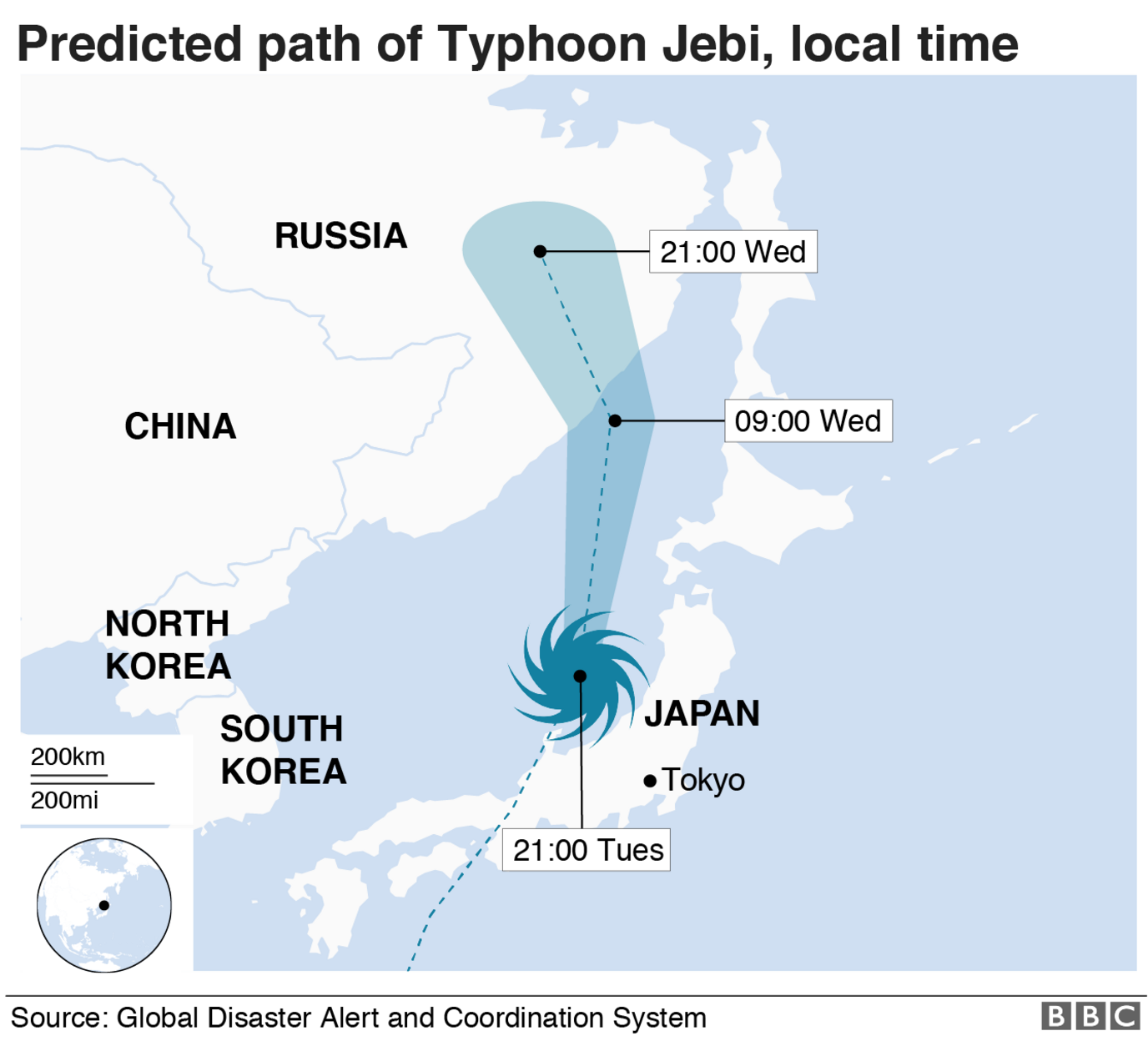

It moved quickly northwards over the mainland in the west of the country.
In addition to the deaths, some 300 people were injured, officials said.
What damage was caused?
Some 400,000 households are said to be still without power.
The winds brought down part of the ceiling in the main railway station in the tourist hub of Kyoto.
Images showed containers in ports thrown about like toy bricks and vehicles scattered across roads.
Dozens of cars were engulfed in fire at a depot in Nishinomiya as water short-circuited electrics.
Some 1.2 million people had been advised to leave evacuated areas as the storm approached and local media say some 16,000 took to designated shelters overnight.
Prime Minister Shinzo Abe tweeted: "We continue to make utmost efforts to respond to disaster damage and restore infrastructure."
The Universal Studios Japan theme park in Osaka was closed again on Wednesday but should reopen on Thursday.
Footage on social media showed the 100m (328ft) tall ferris wheel in Osaka spinning rapidly in the storm despite being switched off.
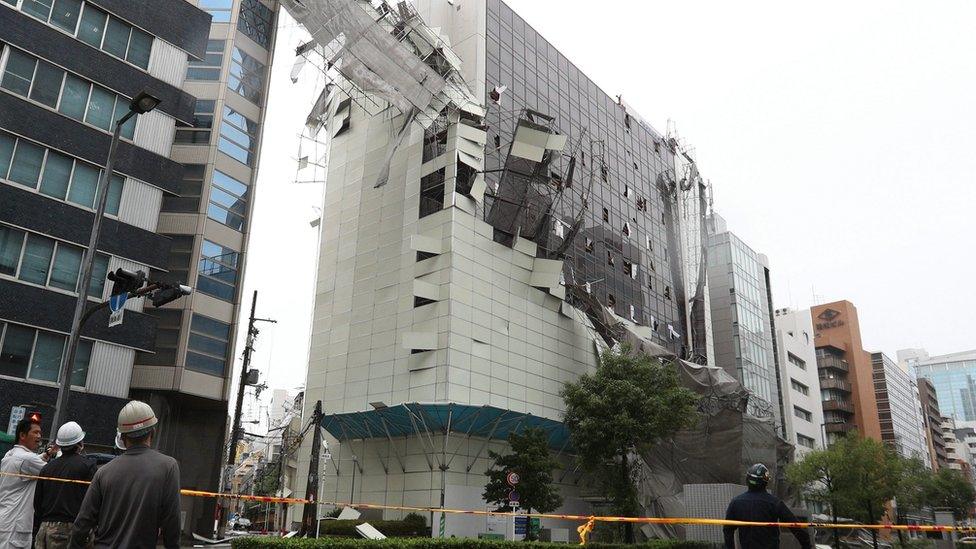
Scaffolding was brought down in Osaka
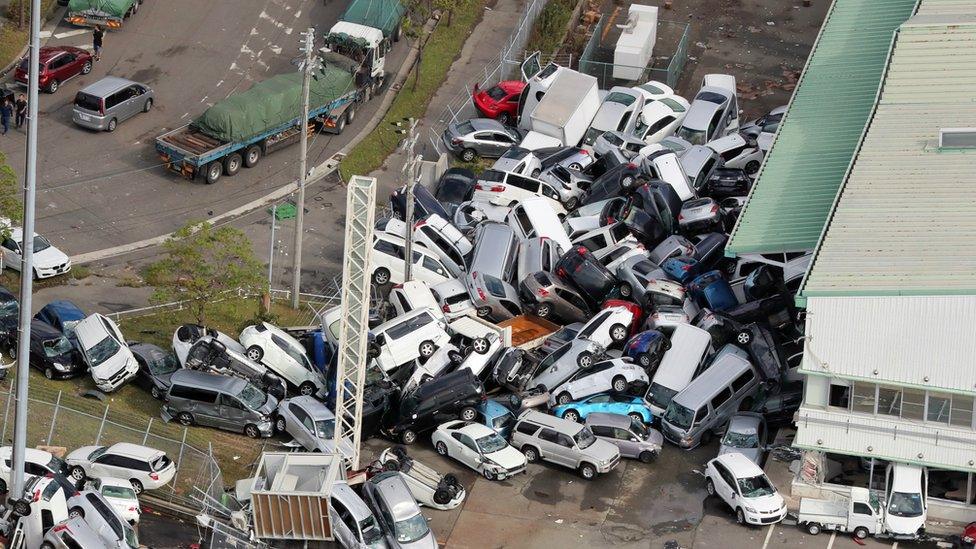
Cars in Kobe were overturned and toppled by strong winds

In Hyogo prefecture, the storm caused a ship to crash into a breakwater


- Published5 September 2018
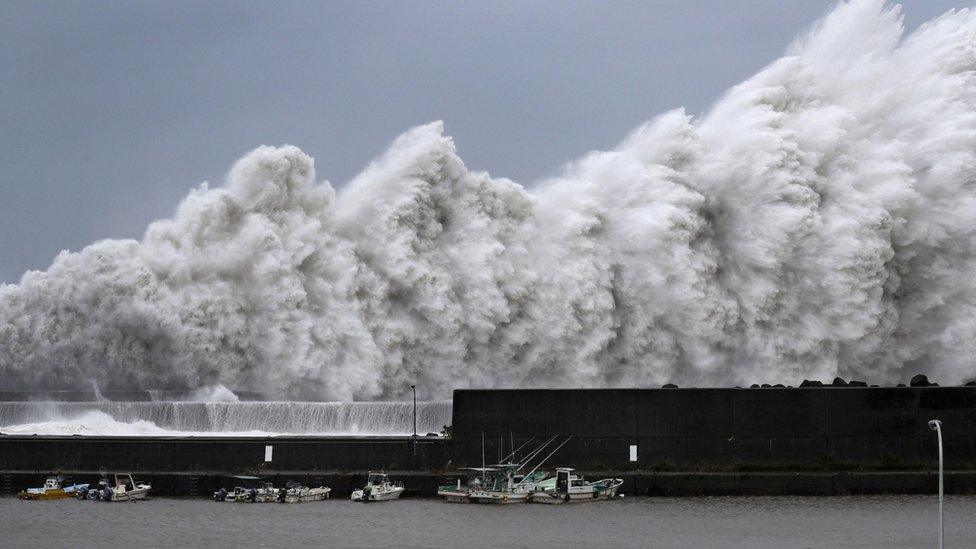
- Published4 September 2018
